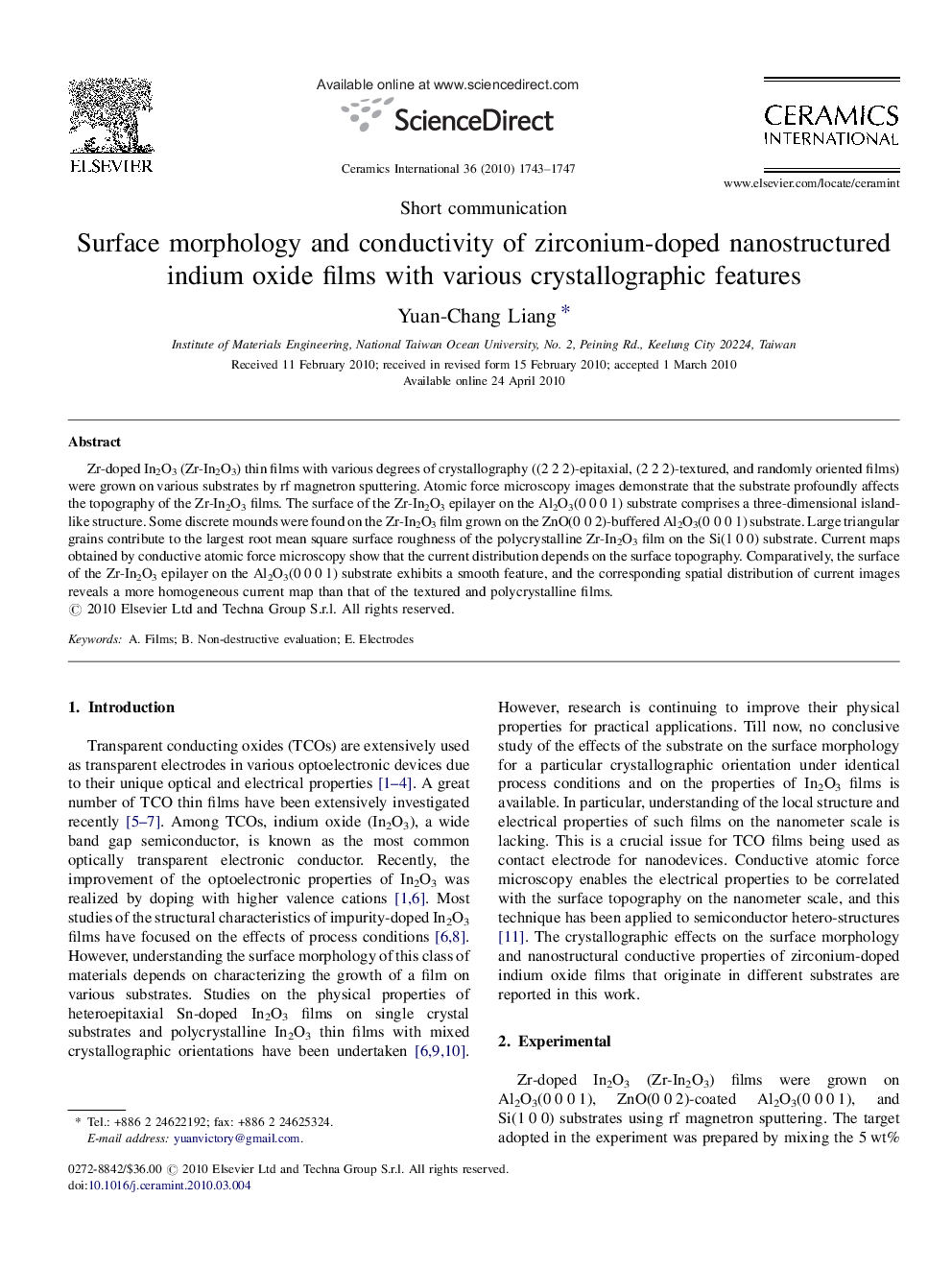| Article ID | Journal | Published Year | Pages | File Type |
|---|---|---|---|---|
| 1464122 | Ceramics International | 2010 | 5 Pages |
Zr-doped In2O3 (Zr-In2O3) thin films with various degrees of crystallography ((2 2 2)-epitaxial, (2 2 2)-textured, and randomly oriented films) were grown on various substrates by rf magnetron sputtering. Atomic force microscopy images demonstrate that the substrate profoundly affects the topography of the Zr-In2O3 films. The surface of the Zr-In2O3 epilayer on the Al2O3(0 0 0 1) substrate comprises a three-dimensional island-like structure. Some discrete mounds were found on the Zr-In2O3 film grown on the ZnO(0 0 2)-buffered Al2O3(0 0 0 1) substrate. Large triangular grains contribute to the largest root mean square surface roughness of the polycrystalline Zr-In2O3 film on the Si(1 0 0) substrate. Current maps obtained by conductive atomic force microscopy show that the current distribution depends on the surface topography. Comparatively, the surface of the Zr-In2O3 epilayer on the Al2O3(0 0 0 1) substrate exhibits a smooth feature, and the corresponding spatial distribution of current images reveals a more homogeneous current map than that of the textured and polycrystalline films.
